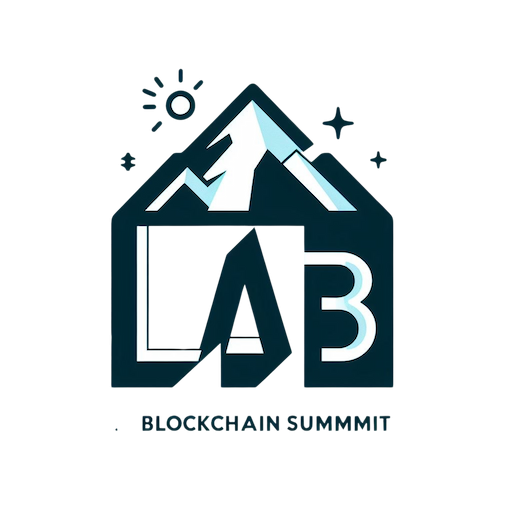
Could you even have imagined that LayerZero can seamlessly connect different blockchains, making cross-chain transactions as easy as sending an email?
This groundbreaking technology is changing the way we think about blockchain interoperability.
LayerZero aims to bridge the gap between isolated blockchain networks. By enabling direct communication between various chains, it eliminates many of the inefficiencies and complexities that have plagued decentralized applications (dApps) for years.
For tech enthusiasts, developers, and blockchain entrepreneurs—this is a game-changer. Many struggle with the limitations of current blockchain systems, like high fees and slow transaction times. LayerZero addresses these pain points by providing a more streamlined, efficient solution.
I first encountered LayerZero while diving into blockchain key concepts. Its potential blew my mind! In this article, you’ll learn how LayerZero works, its benefits, and why it’s poised to revolutionize the broader blockchain world.
What Is LayerZero?
Alright, let’s jump into what LayerZero is all about. Picture this: you’ve got a bunch of blockchains, each doing their own thing like independent countries with their own languages and currencies. Now imagine LayerZero as the ultimate translator that makes these countries talk to each other seamlessly.
LayerZero’s main gig is making cross-chain communication as easy as sending an email. Remember how annoying it was when you had to convert one cryptocurrency into another and then wait ages for the transaction? With LayerZero, you can send assets directly from one blockchain to another without jumping through hoops.
Some of you might be wondering, “What’s so special about this?” Well, traditionally blockchains are like islands—beautiful but isolated. They’re great on their own but a pain when they need to communicate. That’s where LayerZero comes in handy by bridging these gaps.
Here’s a funny tidbit: I once tried moving some funds from Ethereum to Binance Smart Chain (BSC). It felt like trying to get my cat to take a bath—unpleasant and unnecessarily complicated. But with LayerZero, this process becomes smooth and almost fun!
So how does it work? Without getting too techy, think of it like a postal service for blockchains. You drop your package (assets) at the post office (LayerZero), which then ensures it reaches its destination safely and quickly, even if it’s across different networks.
Why should you care? If you’re developing dApps or just trading crypto casually, faster transactions mean less time staring at loading screens and more time enjoying life—or binge-watching Netflix shows guilt-free because hey, your crypto’s working efficiently in the background!
And let’s not forget the costs! High fees have been the bane of many blockchain users’ existence. By optimizing these cross-chain transactions, LayerZero helps keep those pesky costs down. More money saved means more funds for pizza night.
Ever thought about what the future holds for such technology? Imagine a world where switching between cryptocurrencies is as seamless as swapping apps on your phone. The barriers we face now could soon be old news thanks to innovations like LayerZero.
Key Features Of LayerZero

LayerZero has some cool features that make it stand out in the world of blockchain. Let’s jump into what makes this tech so special.
Interoperability
Ever tried to send Bitcoin to an Ethereum wallet? It feels like trying to fit a square peg in a round hole.
LayerZero changes the game here by letting different blockchains chat with each other directly. Think of it like having a universal translator for crypto networks. No more bouncing your assets through multiple exchanges or worrying about compatibility issues. Imagine if every country spoke the same language—travel would be a breeze, right? That’s what LayerZero does for blockchains.
Security
Security is no joke in the crypto world, and LayerZero takes it seriously. Picture this: it’s like having Fort Knox protecting your transactions. Every message sent between blockchains gets verified, ensuring nothing fishy slips through the cracks. And here’s where it gets fancy—LayerZero uses something called “oracle” and “relayer” systems (basically super smart middlemen) to keep everything secure and trustworthy without making you jump through hoops.
Scalability
We’ve all been there: waiting forever for a transaction to go through because the network’s overloaded.
It’s like standing in line at Disneyland on a weekend—frustrating!
LayerZero tackles this head-on by being super scalable, meaning it can handle tons of transactions without breaking a sweat. So whether you’re transferring small amounts or moving big bucks, you won’t be stuck twiddling your thumbs waiting for confirmations.
So there you have it! Interoperability lets different cryptos work together seamlessly; security keeps everything locked down tight; scalability ensures smooth sailing even during peak times. Pretty nifty, huh?
Advantages Of LayerZero
LayerZero has some cool perks that make it super handy for anyone dabbling in blockchain tech. Let me break it down for you.
Flexibility
LayerZero’s flexibility is like having a Swiss Army knife in your crypto toolkit. It connects with different blockchains, so you’re not stuck using just one network.
For instance, I remember when I tried moving funds from Ethereum to Binance Smart Chain; it felt like pulling teeth! With LayerZero, those days are over because it lets you switch networks smoothly. Imagine being able to send assets or data directly between blockchains without all the middlemen and extra steps—it’s a game-changer.
Performance
Performance-wise, LayerZero is fast and efficient. Think of it as the sports car of blockchain protocols—sleek and speedy. Transactions that used to take forever now happen almost instantly. I once had a transfer take hours due to network congestion; not fun at all.
Now, with LayerZero, transactions zip through quickly, making life easier whether you’re a developer pushing updates or just trading crypto on the go.
Ecosystem Support
The ecosystem support around LayerZero is like having an entourage of supportive friends who always have your back. It’s designed to work seamlessly with many dApps (decentralized applications) across various blockchains.
This means more options for developers and users alike—you can tap into a broader range of services and tools without jumping through hoops. When I first started exploring dApps, finding ones compatible with each other was frustratingly complex; now it’s much simpler thanks to this wide-ranging support.
All these features make LayerZero a solid choice for anyone wanting smoother interactions in the crypto world without unnecessary hassle.
Limitations To Consider
While LayerZero is pretty fantastic, it isn’t without its quirks. Let’s jump into a couple of them.
Complexity
LayerZero, even though making blockchain communication easier, still has a steep learning curve. Sure, it’s like having a universal translator for blockchains, but setting it up feels like assembling IKEA furniture without the instructions. You might end up with extra pieces or wonder if you’re missing something crucial.
I remember trying to explain cross-chain transactions to my friend who’s new to crypto. I saw their eyes glaze over when I mentioned “oracle and relayer systems” (fancy terms for intermediaries that help verify transactions). Even though these components are essential for security, understanding how they fit together can be daunting.
So, while LayerZero simplifies many things once set up, getting there requires some serious brainpower. It’s not exactly plug-and-play yet—more like plug-pray-and-read-the-manual-three-times.
Integration Challenges
Integrating LayerZero with existing dApps isn’t always straightforward either. Think about inviting someone new to your group chat; everyone needs to adjust a bit. Similarly, dApps must adapt to LayerZero’s protocols and sometimes tweak their codebase.
During one of my late-night coding sessions (fueled by too much coffee), I tried integrating LayerZero into an existing DeFi project. It felt like trying to add rocket boosters to a car—it worked eventually but took way more time and effort than expected.
And let’s not forget compatibility issues with older systems that haven’t kept pace with newer tech developments. If your dApp runs on legacy frameworks or outdated smart contracts (the scripts running on blockchains), integration might feel like forcing a square peg into a round hole.
So yes, while LayerZero rocks in many ways, bringing it onboard isn’t always smooth sailing.
Use Cases For LayerZero
LayerZero isn’t just tech wizardry; it’s got real-world applications that can change how we handle everyday transactions. Let’s dig into a couple of areas where it shines.
Financial Services
Imagine moving money between banks as easily as sending a text. That’s what LayerZero does for crypto assets. It makes transferring funds across different blockchains quick and painless. Gone are the days of waiting ages for your Bitcoin to finally land in your Ethereum wallet while you keep checking if it’s stuck somewhere in the cyber void.
In traditional finance, we’ve got remittances, cross-border payments, and even peer-to-peer lending.
With LayerZero, these services get turbocharged. Imagine being able to send money to your family overseas without those pesky fees eating up half of it! Or think about decentralized finance (DeFi) platforms that can now offer loans or investment opportunities more efficiently because they’re not bogged down by slow transaction times or high gas fees.
Supply Chain Management
Ever wonder how that avocado traveled from Mexico to end up perfectly ripe in your kitchen? Supply chains are complex beasts with lots of moving parts. Enter LayerZero—it lets each part of the supply chain communicate seamlessly with others on different blockchains.
Picture this: farmers, shippers, distributors, and retailers all using separate blockchain systems but need to share data like shipping times and quality checks. Normally this would be a logistical nightmare requiring manual updates at every step. But with LayerZero connecting these disparate systems, info flows smoothly like a well-oiled machine—or maybe a conveyor belt full of avocados!
